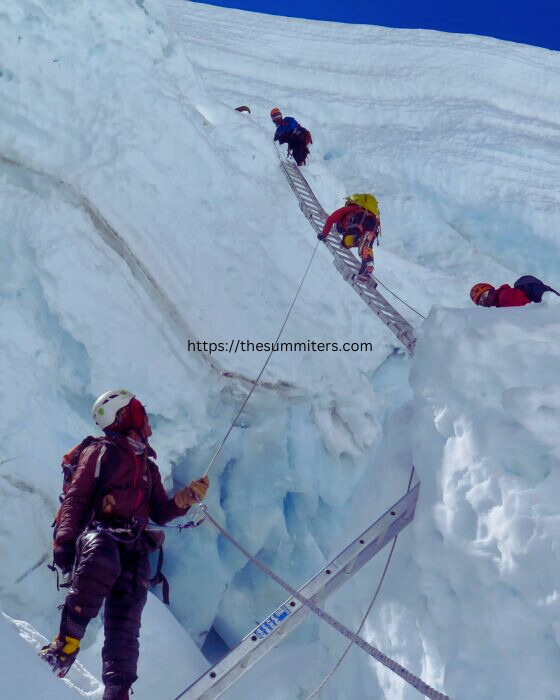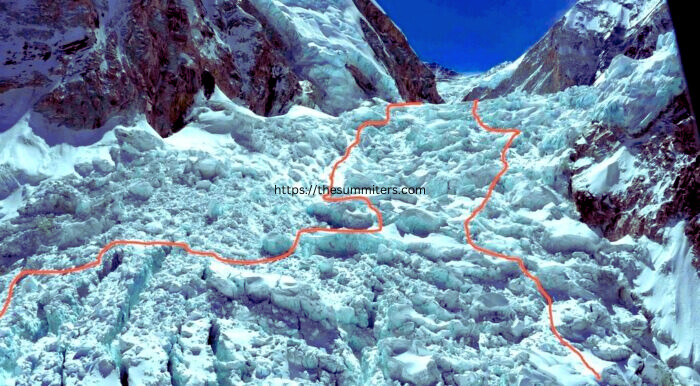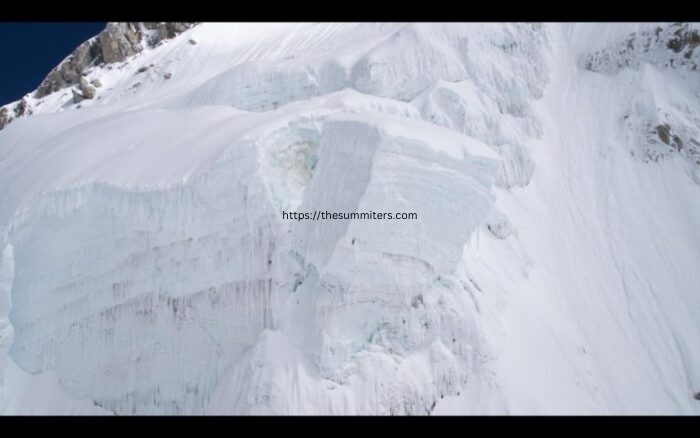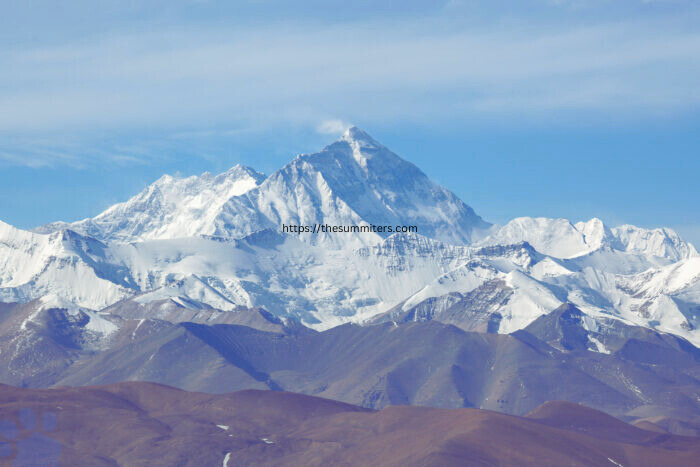As we roll into the latter half of April, there’s a surprising development – no climbers have reached the higher camps on Everest yet. This delay is causing some tension, especially at the bustling South Base Camp, where climbers are eagerly waiting for the route to Camp 1 to be established.
But what’s causing the delay? The treacherous Khumbu Icefall is at the heart of the issue. Each year, sherpas grapple with the daunting task of navigating through this dangerous terrain, and this season seems to be presenting even more challenges than usual.
Growing Worries
The ascent up Everest’s South Side should’ve kicked off at least two weeks ago. Climbers, particularly those opting not to use bottled oxygen, should already be making their way up to Camp 2 at 6,400m. But, there’s a hitch – the route through the Icefall isn’t cleared yet.

“I’m scouting out acclimatization options on nearby peaks,” shared Valeri Babanov from Russia, just before he headed to Lobuche Peak to spend a night in his small tent at 6,000m.
Expedition leaders are fretting about potential congestion once the route eventually opens up. When that time comes, hordes of staff and clients will rush to get moving, possibly leading to traffic snarls at various points along the route.
What’s the Hold-up About?
The main reason for the delay boils down to this: the path the Icefall Doctors aimed to open didn’t pan out as expected. Not once, but twice.

“They first attempted to go near Nuptse but came across a crevasse they couldn’t cross,” explained the Sagarmatha Pollution Control Committee (SPCC) to Dawa Steven Sherpa of Asian Trekking. “Then, they tried to navigate through the middle of the Icefall, only to encounter a massive, looming serac.

They were hoping this serac would collapse soon, but it’s still standing strong. Finally, they’ve shifted to the ‘old route’ on the left side of the icefall, near the West Shoulder.
Watch Out for Risks from the West Shoulder
Here’s some good news: the sherpa team has made it to the flat section near Camp 1. That means the Western Cwm is now accessible, and teams can begin their work in a day or two.
But there’s a big reason why teams have steered clear of the traditional route until now. It was abandoned after a chunk of serac fell from the West Shoulder in 2014, causing one of the worst human tragedies on Everest at that time.
Since then, the sherpas responsible for setting up ropes and ladders from Base Camp have discovered a safer path through the maze of seracs in the middle, avoiding the hazardous hanging glacier on the West Shoulder.
Another massive piece of serac hanging from the West Shoulder blocked climbing attempts in the fall and winter of 2019. You can take a look at the photo below for reference.
It’s uncertain if the current route might change during the season. The Ice Doctors are continuously maintaining the route and always on the lookout for the safest possible option. However, there’s no completely safe way through the Icefall. Some routes just carry more risks than others.
Exploring Solutions
Lukas Furtenbach shared some insights with ExplorerWeb “In recent years, the route was quite close to the West Shoulder in the upper part, and closer to Nuptse in the lower part.”
Furtenbach has experienced close calls in both sections — in 2022 at the upper part and in 2016 at the lower part.
He explained further, Both sides have their potential for natural events that can disrupt the route.
Furtenbach stressed that there’s no guaranteed safe path through the Icefall. Thus, it’s essential to minimize the time spent there for both climbers and sherpas.
Reducing rotations, ideally to just one, and moving faster would significantly decrease individual risk, he suggested.
But then, how would the sherpas supply the large high-altitude camps? Furtenbach believes helicopters are the best solution. However, regulations only allow ropes to be airlifted up the Icefall, not oxygen, gear, or supplies.
Why not allow cargo? Furtenbach questions. Why put the lives of sherpas at risk?
In the quest for alternatives, it’s worth noting that Marc Batard from France is back in Nepal, continuing his plan to open and secure an alternative route along the flank of Nuptse, bypassing the Icefall. This route goes above the glacier to Camp 2 in the Valley of Silence.
Batard has been working on this project for two years, but hasn’t received as much support as expected. It’s because his sections under Nuptse are also prone to avalanches and serac fall. In previous expeditions, Batard’s team hadn’t reached the riskier sections yet.
Delays Also Impacting the North Side
While Furtenbach Adventures has a team tackling Everest’s South Side, Lukas Furtenbach himself is leading another group on the North Side. Here’s another issue causing concern: Much like with Shisha Pangma, visas and permits for foreigners aiming to climb Everest from the North Side haven’t been sorted out yet.

However, there’s a small difference: the China-Tibet Mountaineering Association (CMTA) and China’s tourism officials have announced that Everest is finally open to foreign expeditions. However, they haven’t officially given the green light for Shisha Pangma or Cho Oyu for this spring.
Expeditions are optimistic that bureaucratic hurdles will be resolved soon. “Entry to Tibet is delayed for everyone, but the CTMA is working hard to assist all teams in obtaining their permits,” Furtenbach emphasized.